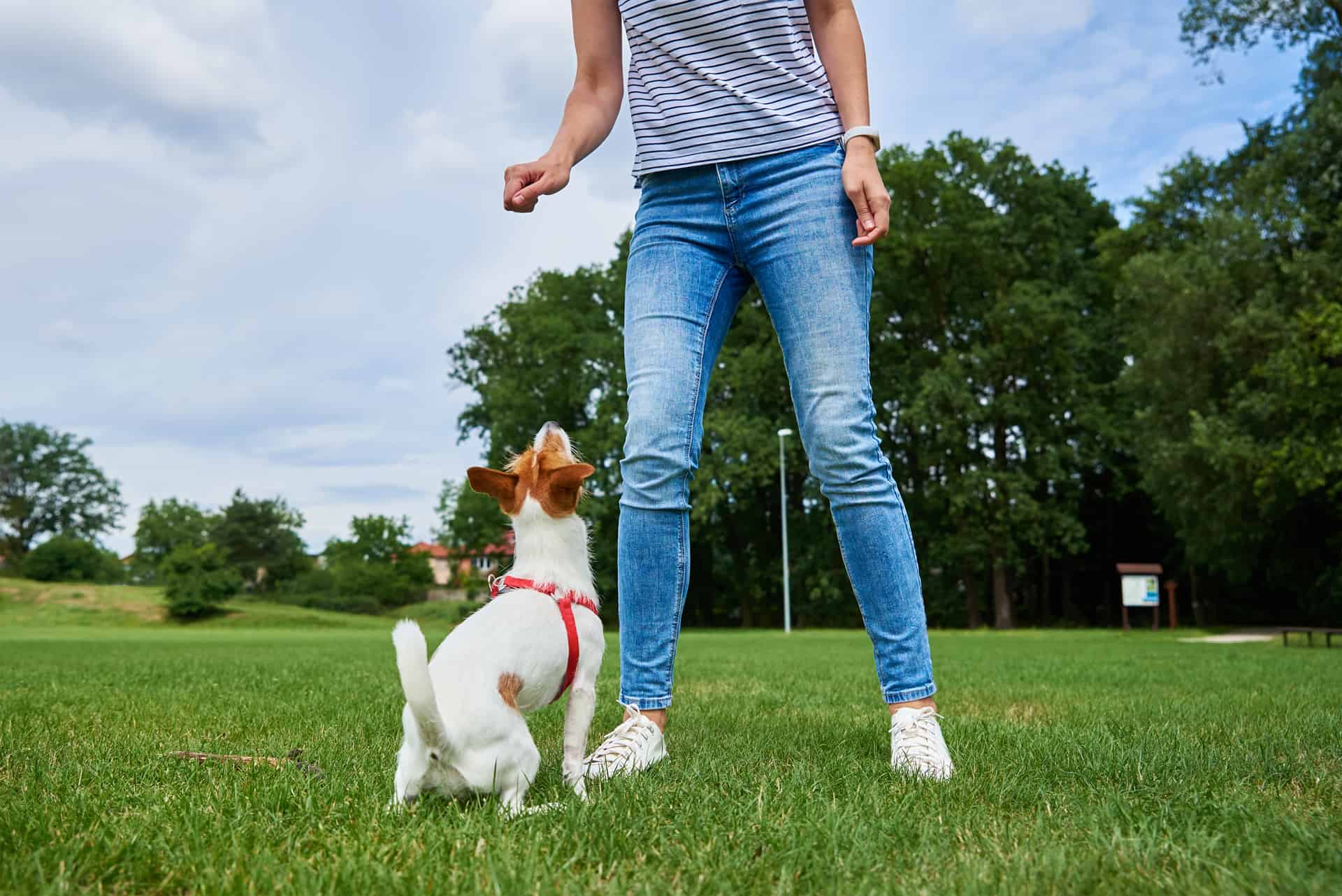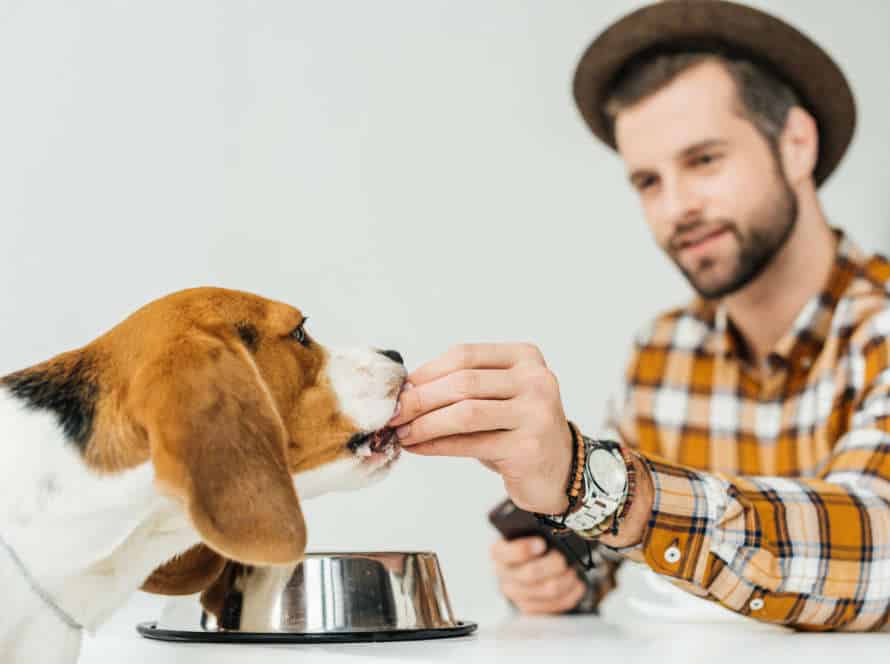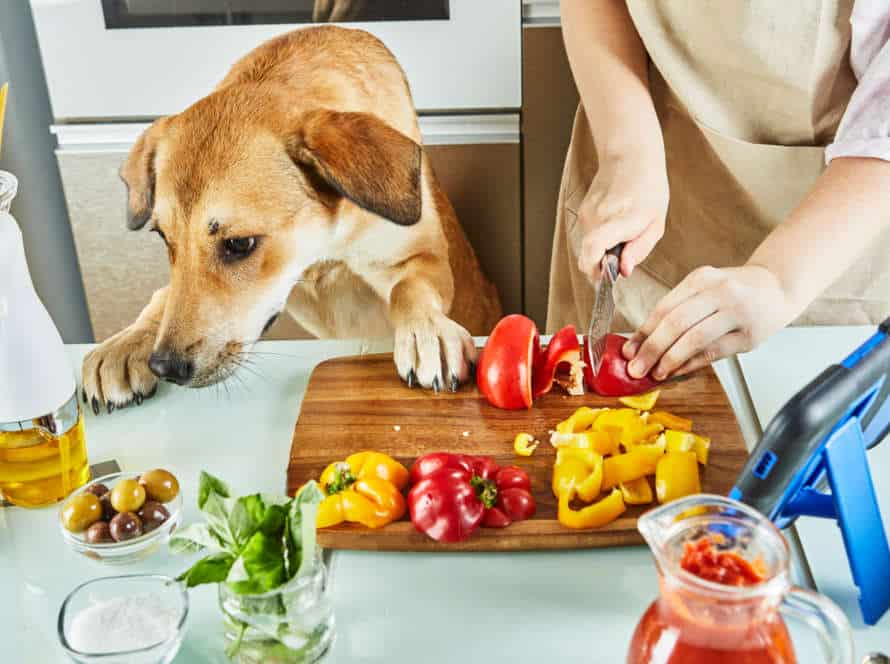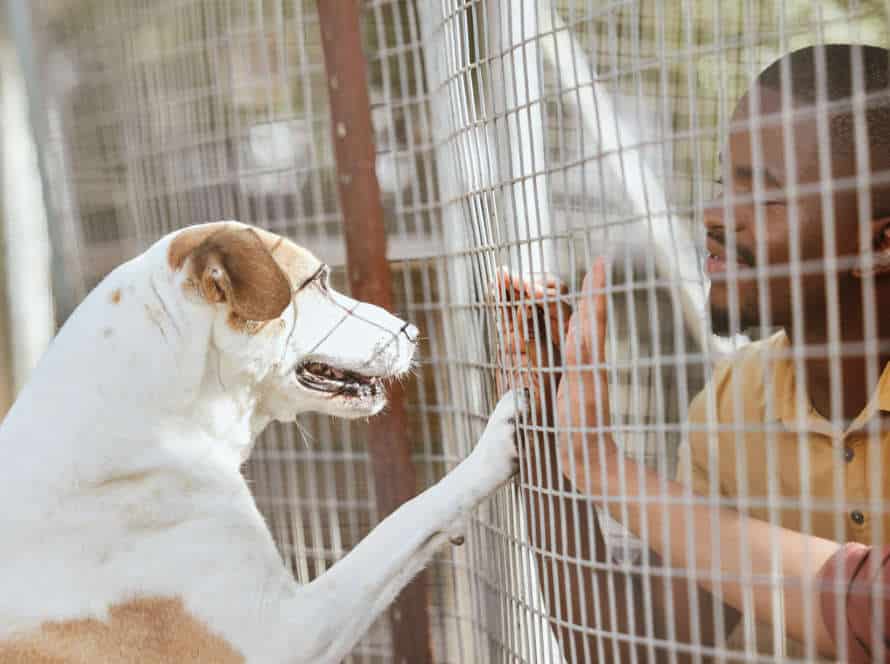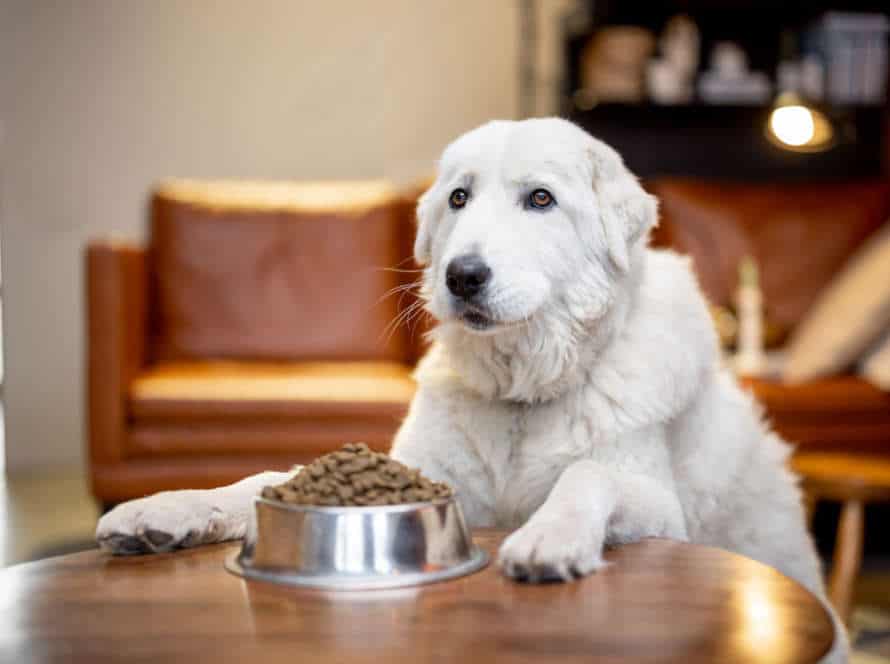Proven Techniques for Effective Positive Reinforcement Training
Positive reinforcement training is a great way to train your pet! Here are some tips to make the most of it:
- Use rewards they love – from treats to toys to playtime with you.
- Rewards must be immediate when they show desirable behaviour.
- Be consistent – reward and punish when necessary.
- Mix up the rewards – keep them interested and motivated.
- Avoid punishment – it can make them anxious.
Pro tip: Make training enjoyable for both you and your pet! Create a bond while having fun.
Importance of Positive Reinforcement Training
Positive reinforcement = a type of training for animals. It focuses on rewarding the animal when they do a behavior you want. This method works quickly and helps animals learn the desired behavior. It is important to use positive reinforcement training. Here are some techniques that have been proven to work:
Understanding Positive Reinforcement Training
Positive reinforcement training is a science-based, humane technique. It uses rewards to promote desirable behaviour in animals. It’s used for pet training, wildlife conservation and therapy. Here are some techniques for success:
- Identify the behavior you want and choose an appropriate reward – food, toys or praise.
- Make sure to reward the behavior immediately.
- Keep rewarding the same behavior consistently.
- Monitor your pet’s progress and adjust training accordingly.
Positive reinforcement training has many benefits. It strengthens the bond between you and your pet, improves their behaviour and reduces their stress and anxiety. It even helps with correcting undesirable behaviour.
Pro Tip: Don’t use punishment or negative reinforcement when training your pet. Positive reinforcement training is a better, more humane technique.
Advantages of Positive Reinforcement Training over Punishment-based Training
Positive reinforcement training has become increasingly trendy amongst pet owners and trainers. It’s a more efficient and humane way to teach new behaviors and correct unwanted ones. Punishment-based training, however, works with harsh tactics such as leash yanking, shock collars, or verbal scolding. Positive reinforcement training, on the other hand, utilizes reward-based approaches to motivate and strengthen good behavior.
Here are the advantages of positive reinforcement training over punishment-based ones:
- It builds a strong bond between pet and owner; based on trust and understanding.
- It provides long-term results, teaching dogs how to learn rather than just how to avoid punishment.
- It lessens the risk of behavior problems, by encouraging good behavior, not just suppressing bad behavior.
- It is a humane and ethical way to train, respecting the dog’s physical and emotional well-being.
- It promotes a positive learning environment. Training sessions are enjoyable and engaging for both dog and owner.
Pro tip: Get to know your dog’s personality, likes and dislikes, and use this knowledge to customize your positive reinforcement strategy.
Common Misconceptions About Positive Reinforcement Training
Positive reinforcement training is becoming popular for its effectiveness and humane way of teaching pets. But, myths about it need to be debunked.
- Myth 1: Positive reinforcement is only for dogs and puppies. Wrong! It can be used to train any animal, from cats to birds, even fish.
- Myth 2: Positive reinforcement means giving treats all the time. Wrong again! Treats are often used, but praising, toys, and playtime are also rewards that reinforce positive behavior.
- Myth 3: Positive reinforcement takes longer to show results. Wrong again! It may take longer to implement, but it is more effective and longer-lasting in teaching pets desired behaviors.
We should recognize and overcome these myths to help our pets learn and grow in a safe and positive environment.
Creating a Positive Learning Environment
Positive reinforcement training is a powerful tool for animal behaviour. It’s based on the principles of operant conditioning. This means behaviour is dependent on its consequences. To make it effective, it’s important to create an environment for learning.
This article will show how to create a positive learning environment for animals.
Setting Clear Expectations and Goals
Setting expectations and goals is essential for an effective positive reinforcement training environment. Here are some top tips to help you set these:
- Make goals specific and measurable: Figure out what you want to accomplish and make specific, trackable goals to reach it. For example, if you want your dog to sit when told, set a goal to achieve this in a set time.
- Break goals into smaller parts: Divide larger goals into smaller parts for better management and higher success.
- Clearly communicate expectations: Clearly explain to your dog what you expect and reward them for meeting these. Consistency is vital here.
- Monitor progress: Keep an eye on your dog’s progress and alter the plan as needed. This keeps you on track and lets you make changes quickly.
Using these tips, you and your pet can create a positive learning environment that encourages growth and success.
Providing Consistent Feedback
To make a successful, positive learning atmosphere, providing consistent feedback is necessary. Here’s how:
- Give feedback regularly. The more the trainer speaks, the better the trainee will learn and improve.
- Keep it clear and particular. The feedback should be objective and specific, with instructions on what can be bettered.
- Tailor feedback to the individual. Adapt the feedback to the trainee’s style and experience, to focus on certain topics.
- Use positive reinforcement. With positive reinforcement training, give instant encouragement to help trainees link positive emotions with their work and learn quickly.
Pro tip: Timely and consistent feedback strengthens the trainee’s confidence, leading to excellent results in the long run.
Understanding Your Dog’s Motivations
Grasping your pup’s motivations is a key factor of concocting a great learning atmosphere for successful positive reinforcement training. Here are the four main motivators for dogs:
- Cuisine: The most frequent motivator for a pooch is food. They’ll do nearly anything for a snack, making it an outstanding tool for positive reinforcement training.
- Focus: Dogs are gregarious animals and crave human focus. So, lauding, petting, and giving concentration to your canine is another effective motivator.
- Fun: Canines love to play, and amusements like fetch, hide and seek, and tug of war are great techniques to involve and drive them.
- Evasion: Dogs will do nearly anything to avert punishment and look for the opportunity to escape it. Therefore, positive reinforcement training is the most effective way to train your pup.
By comprehending your pooch’s motivations, you can form a positive learning atmosphere that motivates them to learn and conduct in the desired way.
Clicker Training
Try Clicker Training! A clicker or similar item is used to mark a desirable behavior. Positive reinforcement training helps to strengthen desired behaviors – and it works! It’s easy to do and can be effective with many animals. So, what is Clicker Training and how does it involve Positive Reinforcement Training? Let’s find out!
Basics of Clicker Training
Clicker training is a great positive reinforcement way to teach many animals, like dogs, cats, birds, and horses.
Here’s the basics:
- Condition the clicker. Begin by connecting the clicker sound with a reward, like a treat or praise.
- Pick a behavior. Choose something to train, then break it down into easy-to-learn steps.
- Click and reward. When the animal does the behavior you want, click the clicker and give the reward right away. This connects the behavior and reward.
- Repeat and make it harder. Keep going, and make the behavior tougher each time.
- Fade the clicker. Once the animal knows the behavior, use the clicker less and less and use only praise or treats.
Pro tip: Clicker training is powerful. It can be used for obedience, tricks, and behavior changes. With practice and patience, it can bring you and your animal closer.
Choosing the Right Clicker
When clicker training, it’s essential to pick the right clicker. This technique is a proven way to reward good behavior. Here are factors to think about:
- Sound: Check the clicker’s sound. It should be loud and clear, even from afar.
- Size: Choose a clicker that fits comfortably in your hand and can be taken around easily.
- Design: Pick a clicker that is user-friendly and ergonomic.
- Type: There are box, button, and whistle clickers. Choose the one that works best for you and your animal.
- Training: Get a clicker with a guide or manual to help you start clicker training.
The right clicker is key for successful clicker training. It helps to strengthen the bond between you and your pet, making training simpler and more successful.
Getting Started with Clicker Training
Clicker training is a great way to positively train your pet. Purchase a clicker and a treat they like, then find a quiet spot. Start with easy commands like “sit” or “come”. As soon as they do the behavior, click and give them the treat. Repeat this several times and increase the complexity. With patience and consistency, your pet will learn new behaviors and listen to your commands better.
To start clicker training your pet:
- Purchase a clicker and a treat they like.
- Find a quiet spot.
- Start with easy commands like “sit” or “come”.
- As soon as they do the behavior, click and give them the treat.
- Repeat this several times and increase the complexity.
- With patience and consistency, your pet will learn new behaviors and listen to your commands better.
Rewards-Based Training
Reward-based training is all about positive reinforcement. It gives your pup a desirable outcome when they behave the way you want. This helps your pup understand what you expect from them, which creates a stronger bond between the two of you. Let’s take a look at the types of reward-based training and how it can help.
Choosing the Right Rewards
It’s critical to pick the right rewards for success with rewards-based training. Each dog is different, so it’s key to tailor your approach to your pup’s individual needs. Here are some tips for reward selection:
- Think about your pup’s personality. If they’re food-motivated, high-value snacks like cheese or hot dogs may be the best option. If they like toys, a game of fetch may be a better reward.
- Experiment with different rewards. Don’t hesitate to try out diverse rewards and find what works best for your pup.
- Switch it up. Using the same reward over and over can make it lose its effectiveness. Varying the rewards you use can help keep your pup motivated and involved. Pro Tip: Rewards don’t just have to be food and toys. Verbal praise, a head pat, or a belly rub can be just as rewarding for your furry friend.
Timing of Rewards
Timing rewards is major in rewards-based training. It can make or break success. To time rewards correctly, give positive reinforcement when the pet does the wanted behavior. Here are tips for timing rewards right:
- Use a clicker or verbal cue, like “Yes!“, to mark the exact moment.
- Reward instantly with treats, toys, or praise.
- No delays! This can confuse the pet and make it harder to know which behavior earned the reward.
- Be steady with rewards and timing to reinforce good behaviors and speed up training.
How to Phase Out Food Rewards
Looking to phase out food rewards in pet training? Here’s some successful techniques for positive reinforcement:
- Gradually decrease treat frequency. Begin by cutting back on treats given for each behavior and switch to physical or verbal praise instead.
- Switch to non-food rewards. Toys, belly rubs, playtime – these can all be used as positive reinforcements.
- Treat more sparingly. Give treats only when your pet does exceptionally well or when learning a new skill.
- Use ‘Jackpot’ treats. Give a bunch of small treats all together when your pet does a behavior perfectly.
By using these techniques, you can phase out food rewards and still reinforce positive behavior in your pet.
Shaping and Capturing
Shaping and capturing are must-haves for training success. They rely on positive reinforcement, something that’s part of operant conditioning. This means rewarding desirable behaviors to help your pet learn faster. Let’s take a look at what these two techniques are and how to use them for the best results when training your pet.
What is Shaping and Capturing?
Shaping and capturing are two powerful methods for teaching animals. Shaping involves breaking a complex behavior into simpler steps, then teaching the animal each step. Capturing is noticing and reinforcing a behavior that the animal does without training.
These techniques can be used to train pets like cats and dogs, and even exotic animals such as dolphins and parrots. With shaping and capturing, trainers can make positive connections with desired behaviors. This makes it more likely the animal will keep doing those behaviors in the future.
Pro tip: Be patient and consistent. Always use positive reinforcement, not punishment, to encourage animal behavior.
Techniques for Shaping and Capturing Behaviors
Shaping and capturing are powerful tools for positive reinforcement training. They can help you capture new behaviours in animals or even people.
Capturing a behaviour means waiting and rewarding it.
Shaping is breaking down complex behaviours into smaller steps and giving rewards for progress towards the desired behaviour.
To get the best results, a few techniques can be used:
- Target training – teach your animal to target a specific object or area with a nose or paw touch. This can be used for things like sitting or heeling in dogs.
- Free shaping – reward any behaviour that leads to the desired behaviour. This lets the animal use its thought process to come up with a solution.
- Back chaining – reverse the order of a behaviour chain so the last behaviour is trained first.
Shaping and capturing helps to achieve the desired behaviour without distress. By rewarding any part of the action that fits, the trained behaviour is built up gradually, leading to better long-term results.
Leveraging Shaping and Capturing Techniques for Advanced Training
Shaping and capturing are two successful tactics used in positive reinforcement training. They help teach new behaviors or strengthen existing ones.
Shaping divides a behavior into smaller steps and rewards the dog for each step until they finish the behavior. Capturing rewards the pup whenever they do a wanted behavior without prompting.
For advanced training, take these steps:
- Identify the goal behavior and break it into simple steps.
- Capture and reward any behaviors that contribute to the desired behavior.
- Use shaping to guide your dog to the complete behavior. Reward each small step.
By using these tactics, you can train your dog to do more complex behaviors and reinforce existing ones.
Overcoming Training Challenges
Positive reinforcement training is an efficient way to teach your pet new behaviors. But it’s not the simplest. It needs patience, commitment and evenness to carry out these techniques properly. Plus, similar to any other talent, it takes time to become an expert.
In this part, we’ll look into methods that can help you beat widespread training problems, and enhance the performance of your positive reinforcement training.
Common Training Challenges
Training a pet can bring joy, but it can be tough. Here are some issues and ideas to beat them:
- Not interested? Use treats & praise to get them involved in training.
- Distracted? Keep it short, one step at a time, and raise distractions gradually.
- Scared? Make the space safe & comfy, and introduce new things little by little.
- Consistent? Set a routine, use the same cues & rewards for good behavior.
By doing this, you’ll give your pet successful positive reinforcement.
Pro tip: Training should be fun! Be patient, take your time & always reward good behavior.
Troubleshooting Techniques
Training your pet can be rewarding. But, it can also have its challenges. Here are successful techniques to overcome common issues with positive reinforcement training:
- Motivate them with their favorite treats.
- Be consistent with commands, gestures, and tone of voice.
- Keep training sessions short.
- Patience is key – let them learn at their speed.
- Focus on praising and rewarding good behavior.
By using these techniques, you will ensure successful positive reinforcement training.
Importance of Patience and Persistence
Positive reinforcement training requires patience and persistence from both the dog and their trainer. It may take longer than expected, but it’s possible with the right techniques.
Here are some proven methods:
- Break big goals down into small achievable steps.
- Reward the pup instantly for correct behavior.
- Employ treats they love as rewards.
- Train consistently.
- Keep calm and don’t get mad.
- Be patient and don’t give up.
With these tips and a positive attitude, you can teach your dog almost anything. Celebrate every success and you’ll notice progress over time.
Pro Tip: Your pup learns and grows daily. So, stay consistent, patient, and persistent with training.
Frequently Asked Questions
Q: What is positive reinforcement training?
A: Positive reinforcement training is a method of training where desirable behaviors are rewarded to increase the likelihood of those behaviors being repeated.
Q: What are some proven techniques for positive reinforcement training?
A: Some effective techniques include clicker training, shaping, and targeting.
Q: Can positive reinforcement training work for all types of animals?
A: Yes, positive reinforcement training can be used for all types of animals, including dogs, cats, birds, and even exotic animals.
Q: What are the benefits of positive reinforcement training?
A: Positive reinforcement training has been shown to increase obedience and increase emotional stability in animals. It also promotes a strong bond between the animal and the trainer.
Q: Is positive reinforcement training the same as bribery?
A: No, positive reinforcement training is not the same as bribery. In bribery, a reward is given to the animal to get them to perform a certain action. In positive reinforcement training, a reward is given after the animal has performed a desired behavior.
Q: What should I do if my animal is not responding to positive reinforcement training?
A: If your animal is not responding to positive reinforcement training, you may need to seek the help of a professional trainer. They will be able to assess the situation and provide personalized guidance and training techniques.

